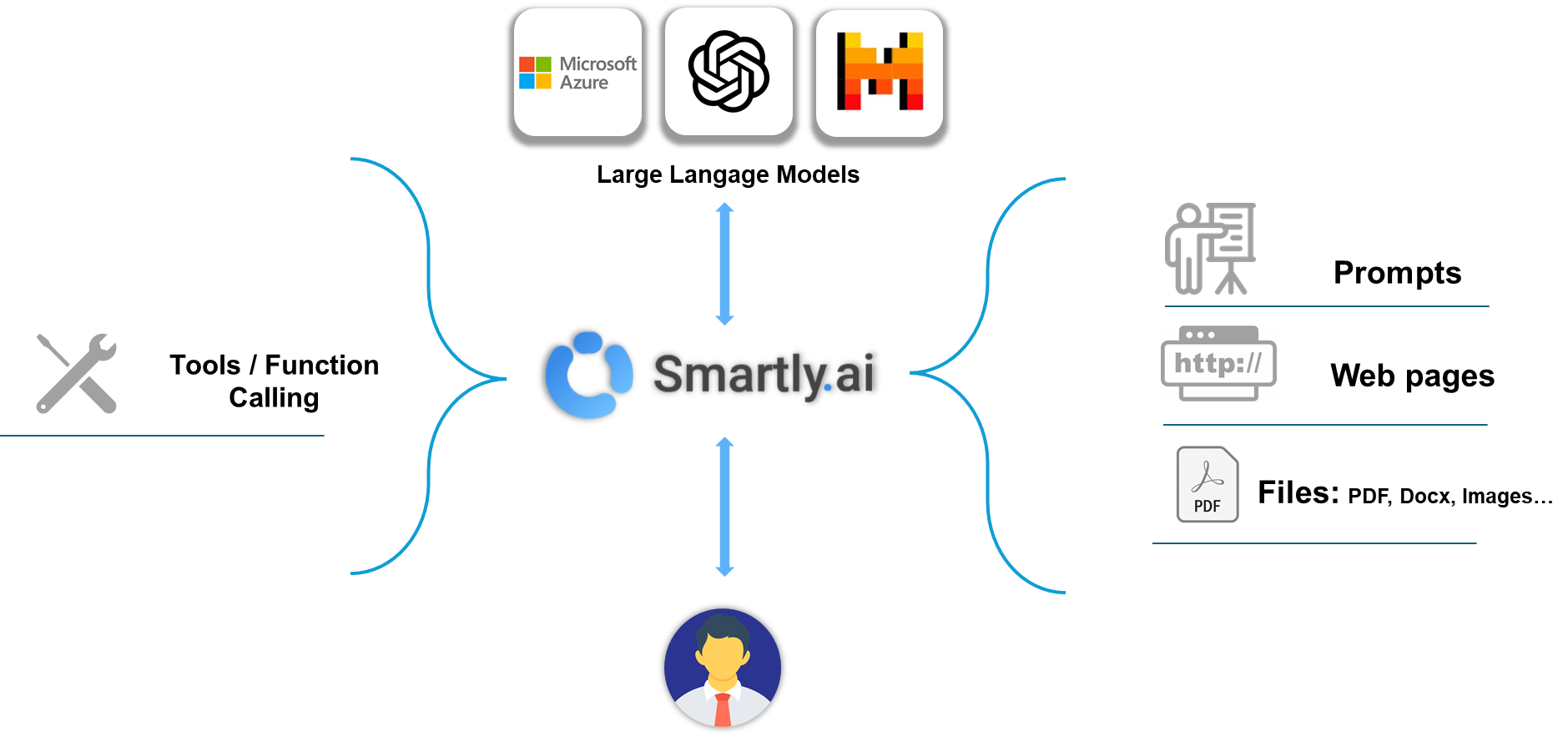Assistants
A tutorial to the Generative AI module
What is an Assistant?
An Assistant (also called Agent) is an intelligent software component designed to autonomously perform tasks and provide assistance by interacting with users and systems. Leveraging artificial intelligence and machine learning, assistants can understand user input, process information, and execute actions based on predefined rules or contextual understanding.
Assistants serve as a bridge between users and complex systems, enabling streamlined interactions, task automation, and personalized responses. They are highly adaptable and can operate in a variety of environments, such as customer service, business process management, or information retrieval.
What is an Assistant Composed Of?
An Assistant is composed of three main components:

1. Prompt
The prompt is the initial input or set of instructions that guide the assistant's behavior and responses. It defines the assistant's personality, objectives, and the scope of its operations.
Key elements of the prompt:
Instruction: Specific guidelines on how the assistant should operate.
Context: Background information that the assistant needs to understand the task.
Constraints: Rules and boundaries within which the assistant must operate.
2. Knowledge Base
The knowledge base is a repository of information and data that the assistant uses to generate accurate and relevant responses. It includes:
Static Data: Predefined facts, FAQs, or structured content.
Static data ensures the assistant's responses are grounded in verified and consistent information, providing reliable outputs for user interactions.
3. Function Calling
Assistants leverage function calling to execute specific tasks and enhance their capabilities. This involves invoking external functions or APIs to:
Retrieve data from external systems.
Execute predefined workflows or complex operations.
Perform actions like sending emails, updating databases, or fetching real-time information.
Function calling enables the assistant to go beyond static responses, allowing dynamic interactions and efficient task execution.
Next we will detail the steps of creating and managing...
Updated 3 months ago
